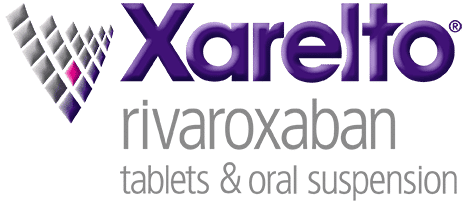预约演示
更新于:2025-05-07
TNIK
更新于:2025-05-07
基本信息
别名 KIAA0551、TNIK、TRAF2 and NCK interacting kinase + [1] |
简介 Serine/threonine kinase that acts as an essential activator of the Wnt signaling pathway. Recruited to promoters of Wnt target genes and required to activate their expression. May act by phosphorylating TCF4/TCF7L2. Appears to act upstream of the JUN N-terminal pathway. May play a role in the response to environmental stress. Part of a signaling complex composed of NEDD4, RAP2A and TNIK which regulates neuronal dendrite extension and arborization during development. More generally, it may play a role in cytoskeletal rearrangements and regulate cell spreading. Phosphorylates SMAD1 on Thr-322. Activator of the Hippo signaling pathway which plays a pivotal role in organ size control and tumor suppression by restricting proliferation and promoting apoptosis. MAP4Ks act in parallel to and are partially redundant with STK3/MST2 and STK4/MST2 in the phosphorylation and activation of LATS1/2, and establish MAP4Ks as components of the expanded Hippo pathway (PubMed:26437443). |
关联
22
项与 TNIK 相关的药物靶点 |
作用机制 TNIK抑制剂 |
最高研发阶段批准上市 |
首次获批国家/地区 美国 |
首次获批日期1974-06-28 |
靶点 |
作用机制 TNIK抑制剂 |
在研机构 |
原研机构 |
非在研适应症- |
最高研发阶段临床2期 |
首次获批国家/地区- |
首次获批日期1800-01-20 |
靶点 |
作用机制 TNIK抑制剂 |
在研适应症 |
非在研适应症- |
最高研发阶段临床前 |
首次获批国家/地区- |
首次获批日期1800-01-20 |
54
项与 TNIK 相关的临床试验NCT06335160
Clinical Study to Evaluate the Possible Efficacy and Safety of Mebendazole in Patients With Ulcerative Colitis Treated With Mesalamine
To evaluate the possible efficacy and safety of mebendazole in patients with ulcerative colitis treated with mesalamine
开始日期2024-04-01 |
申办/合作机构 |
NCT05975983
A Phase IIa, Randomized, Double-Blind, Placebo-Controlled Study Evaluating the Safety, Tolerability, Pharmacokinetics, and Efficacy of INS018_055 Administered Orally to Subjects With Idiopathic Pulmonary Fibrosis (IPF)
The goal of this clinical trial is to learn about INS018_055 in adults with Idiopathic Pulmonary Fibrosis (IPF).
The primary objective is to evaluate the safety and tolerability of INS018_055 orally administered for up to 12 weeks in adult subjects with IPF compared to placebo.
The primary objective is to evaluate the safety and tolerability of INS018_055 orally administered for up to 12 weeks in adult subjects with IPF compared to placebo.
开始日期2024-02-08 |
申办/合作机构 |
NCT05938920
A Phase IIa, Randomized, Double-Blind, Placebo-Controlled Study Evaluating the Safety, Tolerability, Pharmacokinetics, and Efficacy of INS018_055 Administered Orally to Subjects with Idiopathic Pulmonary Fibrosis (IPF)
The goal of this clinical trial is to learn about INS018_055 in adults with Idiopathic Pulmonary Fibrosis (IPF).
The primary objective is to evaluate the safety and tolerability of INS018_055 orally administered for up to 12 weeks in adult subjects with IPF compared to placebo.
The primary objective is to evaluate the safety and tolerability of INS018_055 orally administered for up to 12 weeks in adult subjects with IPF compared to placebo.
开始日期2023-06-19 |
申办/合作机构 |
100 项与 TNIK 相关的临床结果
登录后查看更多信息
100 项与 TNIK 相关的转化医学
登录后查看更多信息
0 项与 TNIK 相关的专利(医药)
登录后查看更多信息
153
项与 TNIK 相关的文献(医药)2025-05-01·Journal of Molecular Biology
SAMD12 as a Master Regulator of MAP4Ks by Decoupling Kinases From the CNKSR2 Scaffold
Article
作者: Chen, Keyu ; Li, Jiahui ; Pan, Wen ; Chen, Shiwen ; Lin, Zhijie ; Zhang, Mingjie ; Wang, Yu
2025-04-02·Molecular Cancer Therapeutics
Identification of a TNIK-CDK9 Axis as a Targetable Strategy for Platinum-Resistant Ovarian Cancer
Article
作者: Hudson, Chantelle ; Sekhar, Sreeja C. ; Ray, Arpita ; Ram, Harini ; Bollerman, Thomas J. ; Iwanicki, Marcin ; Bedi, Karan ; Dunbar, James ; DiFeo, Analisa ; Senkowski, Wojciech ; Teitel, Jessica ; Farsinejad, Sadaf ; Robida, Aaron ; Puleo, Noah ; Nakashima, Michael M. ; Dziubinski, Michele L. ; Richardson, Peter ; Taddei, Andrea ; Carvette, Dylan
2025-04-01·Human Pathology
Hydroa vacciniforme lymphoproliferative disorder, a clinicopathologic and genetic analysis
Article
作者: Zhang, Weiwei ; Molina-Kirsch, Hernan ; Postigo, Mauricio ; Chan, Wing C ; Nakunam, Yasodha ; Beltran, Brady ; Medina, Ivan Maza ; Song, Joo Y ; Saleem, Atif ; Vasquez, Liliana ; Pupwe, George
44
项与 TNIK 相关的新闻(医药)2025-03-13
·药时空
近日,英矽智能近日宣布完成1.1亿美元的E轮融资。此次融资是在公司暂停香港IPO计划后进行的,显示出其在AI药物发现领域的强劲发展势头和市场对其技术的认可。
图源:Nature杂志
Insilico Medicine成立于2014年,是一家全球领先的AI生物技术公司。公司通过其自主研发的Pharma.AI平台,结合生物学、化学和临床试验分析,利用AI技术加速药物发现和开发。其核心技术包括PandaOmics(用于靶点发现)和Chemistry42(用于药物分子生成),这些工具能够快速识别疾病相关靶点并设计出潜在的药物分子。
英矽智能研发管线(图源:英矽智能官网)
英矽智能目前拥有31个研发项目,涵盖多个治疗领域,包括心血管疾病、癌症、纤维化和传染病。以下是其重点管线的介绍:
1. ISM001-055(TNIK抑制剂)
• 适应症:特发性肺纤维化(IPF)和肾纤维化。
• 研发进展:该药物是全球首个通过AI发现靶点并设计的药物,目前已进入II期临床试验。其II期临床试验在中国和美国的近40个研究中心开展。
2. 3CLPro抑制剂(估计不会再开发)
• 适应症:COVID-19和冠状病毒感染。
• 研发进展:该药物为口服共价不可逆抑制剂,目前处于临床前阶段。
3. PHD抑制剂
• 适应症:炎症性肠病(IBD)和慢性肾病(CKD)。
• 研发进展:处于临床一期阶段。
4. QPCTL抑制剂
• 适应症:新型癌症免疫疗法,针对“冷肿瘤”。
• 研发进展:处于临床一期阶段,和复星医药共同开发。
5. 其他管线
• 公司还有USP1和KAT6两款对外授权的项目,以及多个处于发现阶段的新项目,涵盖肿瘤、免疫学和代谢性疾病。
英矽智能此前两次计划在香港进行IPO,但由于市场环境等因素,该计划被暂停。此次E轮融资将帮助公司进一步推进其AI药物发现平台和研发管线。此外,公司还通过与制药公司合作,提供药物发现服务和软件解决方案,获得了可观的收入。
结束语:
英矽智能的AI技术在药物发现领域的应用已经取得了显著进展,其最领先的候选药物ISM001-055的临床试验结果将对公司的未来发展产生重要影响。今年2月,BI的PDE4抑制剂Nerandomilast在IPF上取得成功。英矽智能的作为后来者,AI制药的课代表,ISM001-055的临床数据就很关键了。
识别微信二维码,可添加药时空小编
请注明:姓名+研究方向!
IPO临床2期免疫疗法临床1期
2025-03-12
On the back of mid-stage data for its lead candidate, Insilico Medicine raised $110 million in a series E to progress its portfolio of AI-designed drugs, according to a LinkedIn post on Wednesday from CEO Alex Zhavoronkov. The round was led by Value Partners Group, which Zhavoronkov called one "of the largest publicly-traded asset management firms in Asia." Other existing investors, including Warburg Pincus, OrbiMed Advisors and Lilly Ventures, contributed to the round, which placed the private company's valuation at more than $1 billion, according to a report from Bloomberg. A January release from the government of Pudong — a district in Shanghai, China — said that Pudong Venture Capital, Puxing Synergy Fund and Xiyi Venture Capital also participated in the financing. The fresh capital adds to a $95-million series D total the biotech raised in 2022 across two tranches.AI assetsAccording to Insilico's website, it has 31 total programmes in development, with the most advanced being ISM001-055, a drug candidate for idiopathic pulmonary fibrosis (IPF). The company said in September that the small molecule targeting TNIK met the primary safety endpoint and key secondary efficacy endpoints in a Chinese Phase IIa study, and weeks later disclosed specific data from the trial. Patients with IPF who received the high, 60-mg daily dose of ISM001-055 showed a mean 98.4 mL improvement from baseline in forced vital capacity (FVC) at 12 weeks, while the placebo group experienced a 62.3 mL decline. The treatment group also saw a 3.05% improvement in percent predicted FVC from baseline, compared to a 1.84% decline in the placebo arm."However, the Phase IIa readout is not the only reason for this round," Zhavoronkov said in his post. "We have taken both the generative platforms and the reinforcement learning pipeline to a completely new level with over 700 different models. The funding will be used to progress the therapeutic pipeline and to advance and expand our end-to-end generative AI platform."In addition to ISM001-055, Insilico has nine other assets that have either begun clinical testing, or have received clearance from the FDA to do so. Three assets have been out-licensed to commercial partners, and a fourth is moving forward under a co-development deal with Fosun Pharma. The firm also has a discovery deal with Sanofi worth up to $1.2 billion in biobucks. The company's pipeline is supported by its Generative Biologics technology to design de novo peptides, nanobodies and antibodies; the PandaOmics target discovery engine platform; and its AI small molecule generation platform, Chemistry42, among others.
临床2期临床结果
2025-03-07
药械追踪
No.1 / 英矽智能全球首款AI药物获名Rentosertib,拟治疗IPF
2025年3月7日,英矽智能宣布,其自主研发的抗特发性肺纤维化(IPF)创新候选药物ISM001-055的通用名Rentosertib获美国药物命名委员会(USAN Council)批准。
Rentosertib是全球首款药物靶点和分子结构均由生成式人工智能(AI)赋能发现的候选药物。得益于AI驱动的药物开发进程,该项目从靶点发现到临床前候选化合物提名仅耗时18个月。目前,Rentosertib已成功完成多项临床试验并取得了令人鼓舞的结果。I期临床试验显示,Rentosertib具有良好的安全性、耐受性和药代动力学(PK)特征。IIa期临床试验显示,Rentosertib可实现剂量依赖性的患者用力肺活量(FVC)改善,患者在莱斯特咳嗽问卷(LCQ) 、整体呼吸系统症状等生活质量指标方面也有提升,且治疗整体安全可耐受。
->点击文末阅读原文,解锁完整双语新闻
企业动态
No.1 / 默克2024年财报:收入212亿欧元,医疗业务增长7%
2025年3月6日,德国默克发布2024年全年财务业绩。2024年,集团收入211.56亿欧元(约228.5亿美元),同比有机增长2.0%。其中生命科学板块收入89亿欧元,有机下滑3.3%,主要受客户去库存和新馆疫情相关需求下降影响;医药健康板块收入85亿欧元,有机增长7.0%,主要得益于研发费用减少和成本节流;电子科技板块收入38亿欧元,有机增长4.6%。
医疗保健业务板块继续保持增长态势,创新驱动型业务和成熟业务特许经营都为这一增长做出了贡献。肿瘤业务收入增至20亿欧元(+12.7%)。其中爱必妥销售额12亿欧元(+15.7%),是主要的销售驱动力。神经学与免疫学业务收入达17亿欧元,有机增长2.3%。其中,多发性硬化疗法克拉屈滨销售额11亿欧元,有机增长12.3%。生殖业务收入15亿欧元,有机增长0.8%。心血管、代谢与内分泌业务收入29亿欧元,有机增长8.5%。
->点击文末阅读原文,解锁完整双语新闻
No.2 / 安斯泰来与安川电机成立合资公司,开发细胞治疗制造平台
2025年3月7日,安斯泰来(TSE: 4503)宣布与安川电机(YASKAWA,TSE: 6506)签署最终协议。双方决定成立一家合资公司,旨在利用安川电机子公司机器人生物学研究所(Robotic Biology Institute)的双臂机器人“Maholo”开发细胞治疗产品制造平台。此外,该合资公司还将向初创企业和学术机构开放平台,促进细胞治疗领域的合作与创新。
合资公司注册资本为45亿日元,安斯泰来占60%,安川电机占40%。该合资公司将利用“Maholo”探索高精度和可重复性的制造过程,并通过人工智能优化数字化制造流程,开发符合GMP条件的细胞制造平台,并为合作伙伴的细胞治疗产品候选药物提供生产制造平台。
->点击文末阅读原文,解锁完整双语新闻
No.3 / 强生终止aticaprant治疗重度抑郁的III期VENTURA项目
2025年3月6日,强生宣布终止III期VENTURA研发项目,该项目旨在评估aticaprant作为重度抑郁症(aMDD)辅助疗法的有效性。
数据显示aticaprant安全且耐受性良好,未发现新的安全性问题。但由于在目标患者群体中疗效不足,公司决定停止该项目的进一步研发。基于该药物机制的潜力,强生公司将探索aticaprant在其他医疗需求未满足领域的发展机会。VENTURA项目的全面分析正在进行中,相关结果将在未来的医学会议上公布。
->点击文末阅读原文,解锁完整双语新闻
No.4 / 强生抗抑郁药物速开朗在华商业上市
2025年3月7日,强生宣布,旗下抗抑郁药物速开朗(盐酸艾司氯胺酮鼻喷雾剂)已在中国正式商业上市。此前,速开朗于2023年4月20日获国家药监局批准,用于与口服抗抑郁药联合,缓解伴有急性自杀意念或行为的成人抑郁症患者抑郁症状。
速开朗是中国获批的首个具有全新作用机制和给药方式的抗抑郁药物,可快速缓解伴有急性自杀意念或行为的成人抑郁症患者的抑郁症状。现有抗抑郁药物多作用于单胺通路,一般需要4-6周才能充分发挥抗抑郁疗效。而速开朗通过拮抗N-甲基-D天冬氨酸(NMDA)受体发挥抗抑郁疗效,采用鼻腔喷雾给药方式,可实现快速起效。
两项关键全球临床III期研究ASPIRE I和ASPIRE II的研究结果表明,在伴有急性自杀意念或行为的成人抑郁症患者中,与安慰剂组相比,接受速开朗联合标准治疗的患者4小时抑郁症状即可得到缓解,24小时内抑郁症状显著减轻。安全性评估表明,大多数与速开朗相关的不良事件为轻度或中度,且在给药当天消退。
->点击文末阅读原文,解锁完整双语新闻
全球医疗情报领导者
解锁隐藏在数据中的商业潜力
关于 G B I
”
自从2002年成立以来,GBI始终以技术为驱动,为药企、器械及行业相关服务商提供贯穿生命周期的全球药品市场竞争数据、全球行业资讯、HCPs洞察、全国医疗器械数据等商业信息与洞察,助力企业在进行战略布局和决策时,脱颖而出。历经20余年的深耕细作GBI已成为95%以上跨国药企、国内头部药企、咨询与投资机构等医疗圈灯塔用户值得信赖的长期合作伙伴。
联系我们
投稿 | 发稿 | 媒体合作
▶ xujingou@baidu.com
数据库 | 咨询服务 | 资讯追踪
▶ 点击左下“阅读原文”完成表单填写
点击阅读原文,解锁完整双语新闻
财报免疫疗法临床1期细胞疗法
分析
对领域进行一次全面的分析。
登录
或

生物医药百科问答
全新生物医药AI Agent 覆盖科研全链路,让突破性发现快人一步
立即开始免费试用!
智慧芽新药情报库是智慧芽专为生命科学人士构建的基于AI的创新药情报平台,助您全方位提升您的研发与决策效率。
立即开始数据试用!
智慧芽新药库数据也通过智慧芽数据服务平台,以API或者数据包形式对外开放,助您更加充分利用智慧芽新药情报信息。
生物序列数据库
生物药研发创新
免费使用
化学结构数据库
小分子化药研发创新
免费使用




